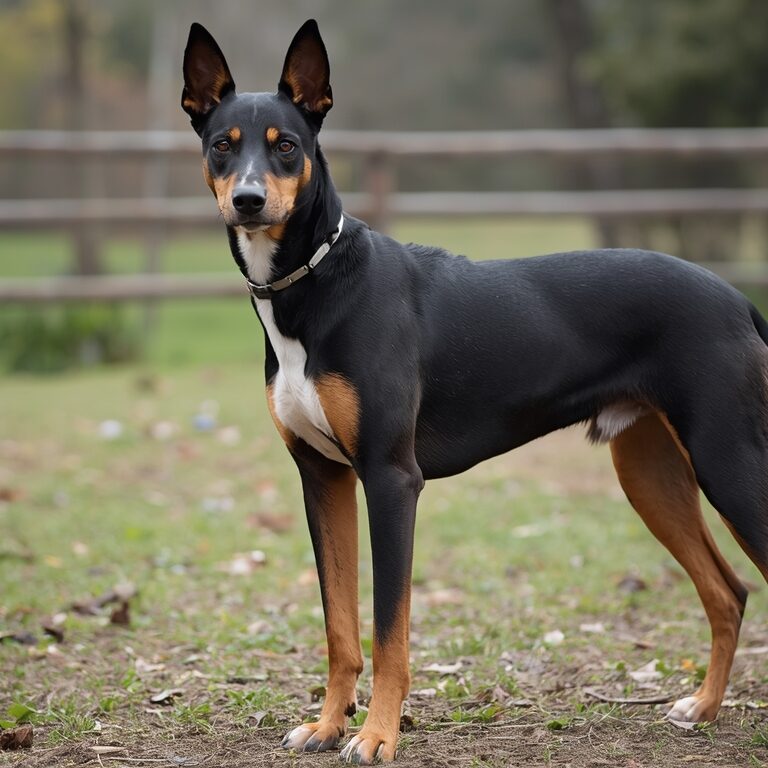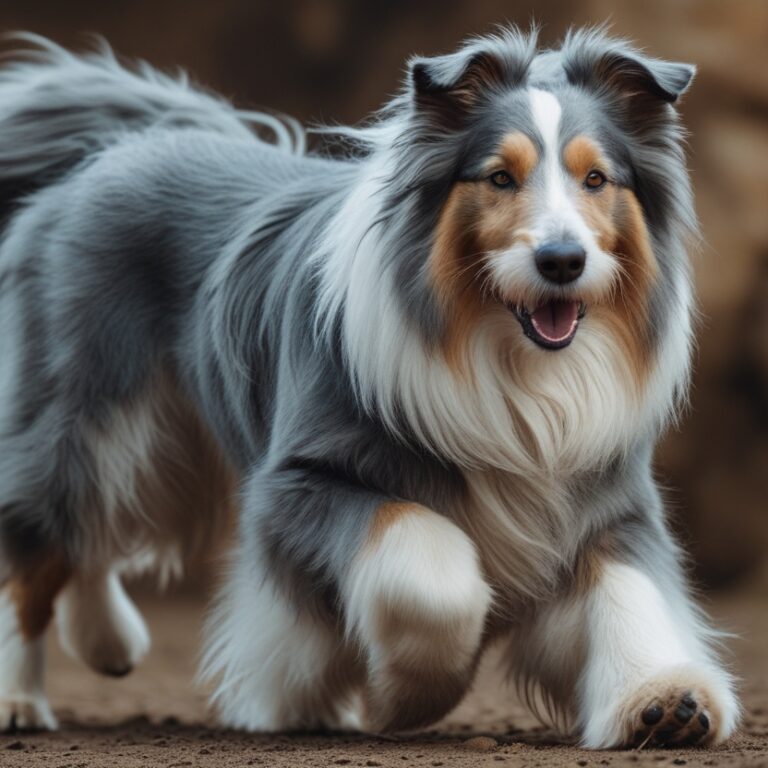German Shepherd Dog: Complete Guide to Temperament, Training, Care, and Lifespan

Introduction to the German Shepherd Dog
The German Shepherd Dog (GSD) is one of the world’s most recognized and respected breeds, celebrated for its intelligence, loyalty, and versatility. Developed in Germany in the late 19th century, this working dog quickly became the gold standard for police, military, and service roles. Known for their protective instincts and high trainability, German Shepherds consistently rank among the most popular dog breeds worldwide.
These dogs are not only skilled in guarding and protection but also excel as family companions, search and rescue workers, and therapy dogs. Their adaptability allows them to thrive in both urban and rural environments, provided they receive proper training, exercise, and socialization.
Search intent for this breed usually revolves around questions like “Are German Shepherds good family dogs?” or “How long do German Shepherds live?” By addressing topics like temperament, health, grooming, training, and costs, this guide ensures prospective owners and enthusiasts get a holistic understanding of the breed.
Whether you are considering adopting a German Shepherd puppy or learning how to manage an adult working dog, this guide will provide structured insights to help you make informed decisions.
History and Origin of the German Shepherd
The German Shepherd breed traces its roots back to 19th-century Germany, where Captain Max von Stephanitz is credited as the founder. His vision was to develop a working dog with unmatched intelligence, obedience, and stamina. Inspired by herding dogs across Germany, he bred dogs for utility and working ability rather than appearance.
In 1899, von Stephanitz officially introduced the first registered German Shepherd Dog, named Horand von Grafrath, considered the foundation of the breed. Initially, GSDs were used for herding sheep and protecting livestock. However, their abilities soon attracted attention for more specialized roles, particularly in military and police service.
During World War I and World War II, German Shepherds served as messenger dogs, guard dogs, and rescue workers, which helped popularize the breed internationally. In Britain, the breed was temporarily rebranded as the “Alsatian” to avoid German associations.
Today, the breed is recognized by major organizations such as the American Kennel Club (AKC), Federation Cynologique Internationale (FCI), and United Kennel Club (UKC). Its reputation as a working dog and family protector has only grown, solidifying the German Shepherd’s legacy as one of the most respected and beloved breeds worldwide.
German Shepherd as a Dog Breed (Recognition & Standards)
The German Shepherd Dog is officially recognized as a distinct breed by leading kennel clubs across the globe. According to the AKC breed standard, the German Shepherd should display a combination of strength, agility, and intelligence.
- Height: 24–26 inches for males, 22–24 inches for females
- Weight: 65–90 lbs for males, 50–70 lbs for females
- Body Type: Muscular, slightly elongated body with a strong back and deep chest
- Ears: Pointed and erect
- Tail: Long and bushy, carried low in repose
The breed standard emphasizes a confident and courageous temperament, making the German Shepherd suitable for roles like police, military, and service work. Their ability to remain calm yet alert is one of the traits that set them apart from other breeds.
Internationally, variations exist, such as the West German show line, East German working line (DDR), and American show line. While the working lines prioritize performance and stamina, the show lines emphasize appearance, often with sloped backs and different angulation.
This recognition and diversity within the breed reflect its adaptability—whether in a family household, on a farm, or in demanding work environments.
Physical Characteristics
German Shepherds are a large, well-built breed characterized by strength, agility, and an athletic frame. Their appearance reflects both functionality and elegance, enabling them to excel in work while maintaining a noble presence.
- Coat Types: Most German Shepherds have a double coat, with a dense undercoat and straight outer coat. Variations include short-haired and long-haired types.
- Colors: Common color combinations include black and tan, black and red, black and silver, solid black, and white German Shepherds. Some rare variations include sable and blue coats.
- Head and Face: A broad skull with a strong muzzle and erect ears give them a distinctive and alert look.
- Body Build: Muscular shoulders, strong hindquarters, and a level topline enable powerful strides and agility.
These features contribute to their working ability, whether in herding, guarding, or agility sports. A well-bred German Shepherd should appear balanced, without exaggerated angulation that may lead to mobility issues.
Because of their size and coat thickness, they require regular grooming and exercise to maintain peak condition. Their appearance often conveys confidence, making them a breed admired not just for performance but also for beauty.
Temperament and Personality Traits
The temperament of a German Shepherd Dog is one of its most defining qualities. Known for being intelligent, loyal, and protective, this breed thrives when given clear leadership and purposeful tasks. Their intelligence ranks among the top three of all dog breeds, enabling them to learn commands quickly and adapt to various roles, from family companion to working service dog.
Loyalty is another hallmark trait. German Shepherds form deep bonds with their families, often becoming especially attached to one or two primary caregivers. This loyalty translates into strong protective instincts, making them excellent guard dogs and natural deterrents against intruders.
While generally calm and even-tempered, GSDs are also known for being energetic and alert, requiring mental stimulation alongside physical activity. If not properly trained or socialized, they may exhibit stubbornness or anxiety, particularly in environments where they feel underutilized.
Early socialization with children, strangers, and other pets ensures balanced behavior. With proper training, they display affection and patience, making them suitable family dogs. However, their protective nature means they remain naturally cautious around unfamiliar people until trust is established.
In summary, the German Shepherd’s temperament is a balance of intelligence, loyalty, and protectiveness—ideal for both work and companionship when nurtured through responsible ownership.
Training a German Shepherd
Training a German Shepherd Dog is both rewarding and essential. Given their high intelligence and natural drive to work, these dogs excel when provided with structured, consistent training. They are highly motivated by positive reinforcement techniques, such as treats, toys, and praise.
Puppy Training Basics
Starting as early as 8 weeks, puppy training should focus on socialization, housebreaking, and basic commands like sit, stay, and come. Early exposure to different environments, people, and animals helps prevent fear-based behaviors later in life.
Obedience Training
Formal obedience training enhances the German Shepherd’s responsiveness and strengthens the bond between dog and owner. Due to their working nature, they enjoy having a job to do, whether it’s practicing commands or engaging in structured play.
Advanced Training
German Shepherds excel in specialized training such as guard work, agility sports, search and rescue, and service roles. Their ability to retain complex instructions makes them highly valuable in law enforcement and military operations.
Training Challenges
Owners must remain patient and consistent, as German Shepherds may exhibit stubbornness if they sense inconsistency. Firm but fair leadership builds respect and trust, preventing undesirable behaviors like excessive barking or destructive chewing.
In essence, training a German Shepherd requires commitment, but their eagerness to learn and please ensures success when approached with structure and consistency.
Exercise Needs
German Shepherds are high-energy dogs that require significant daily exercise to remain healthy and balanced. Without adequate activity, they may develop behavioral problems such as restlessness, destructive chewing, or excessive barking.
Daily Requirements
On average, an adult German Shepherd needs 90–120 minutes of physical activity daily, divided into walks, runs, or play sessions. Puppies require shorter, gentler activities to avoid joint damage while still expending their abundant energy.
Ideal Exercises
- Running and Jogging: Excellent for stamina and physical health.
- Fetch and Frisbee: Stimulates both mind and body.
- Agility Training: Encourages coordination and strengthens muscles.
- Herding Games: Engage natural instincts.
Mental Stimulation
Equally important is mental exercise. Puzzle toys, obedience drills, and scent work prevent boredom and channel their intelligence productively.
Impact of Insufficient Exercise
A sedentary lifestyle can lead to obesity, anxiety, and destructive habits. Active homes with space to run or owners willing to engage in outdoor activities are best suited for this breed.
In conclusion, consistent exercise and mental enrichment ensure that German Shepherds remain healthy, happy, and well-behaved companions.
Diet and Nutrition
The diet of a German Shepherd plays a crucial role in maintaining their health, energy, and longevity. Being a large, active breed, they require a balanced diet rich in protein, healthy fats, vitamins, and minerals.
Daily Caloric Intake
- Adult Dogs: 1,600–2,400 calories per day (depending on activity level)
- Puppies: Higher calorie intake for growth and development
Ideal Food Choices
- High-Quality Dry Kibble: Designed for large breeds with joint support.
- Protein Sources: Chicken, beef, lamb, fish.
- Carbohydrates: Brown rice, oatmeal, sweet potatoes.
- Healthy Fats: Fish oil and flaxseed for skin and coat health.
Feeding Schedule
- Puppies: 3–4 small meals per day
- Adults: 2 meals per day
Supplements
Many owners add glucosamine and chondroitin to support joint health, especially since German Shepherds are prone to hip and elbow dysplasia.
Foods to Avoid
Chocolate, grapes, onions, and excessive table scraps should be avoided, as they are toxic or nutritionally harmful.
By providing a nutrient-dense diet with portion control, owners can help their German Shepherd maintain ideal weight, reduce health risks, and support long-term vitality.
9. Health and Lifespan
The German Shepherd Dog lifespan typically ranges from 9 to 13 years, depending on genetics, care, and lifestyle. While generally healthy, the breed is prone to certain hereditary conditions.
Common Health Issues
- Hip Dysplasia: A genetic condition leading to arthritis and mobility issues.
- Elbow Dysplasia: Similar joint problem affecting front legs.
- Degenerative Myelopathy: A progressive spinal condition seen in older dogs.
- Bloat (Gastric Dilatation-Volvulus): Life-threatening condition where the stomach twists.
Preventive Care
- Regular Vet Checkups: Annual exams for early detection.
- Hip and Elbow X-Rays: Especially important for breeding dogs.
- Vaccinations and Parasite Prevention: Protect against common illnesses.
Longevity Factors
- Proper Nutrition: Balanced diet to prevent obesity.
- Exercise: Maintains muscle strength and cardiovascular health.
- Genetic Screening: Choosing puppies from responsible breeders reduces risks.
Owners should watch for early signs of discomfort such as limping, lethargy, or appetite loss. By prioritizing preventive care and responsible breeding, German Shepherds can live long, healthy lives with minimal health complications.
Grooming and Coat Care
German Shepherds have a double coat, consisting of a dense undercoat and a coarse outer layer. This coat provides insulation but also means the breed is known for heavy shedding, especially during seasonal changes (spring and fall).
Brushing
Regular brushing—2–3 times a week for standard periods, and daily during shedding season—helps reduce loose hair and keeps the coat healthy. Tools like undercoat rakes and slicker brushes are especially effective.
Bathing
Bathing should be limited to once every 6–8 weeks, or when the dog is particularly dirty. Over-bathing strips natural oils, leading to dry skin.
Additional Grooming Needs
- Nail Trimming: Every 3–4 weeks to prevent overgrowth and discomfort.
- Ear Cleaning: Regular inspection for wax buildup or infection.
- Dental Care: Daily brushing or dental chews to prevent tartar buildup.
Coat Health
A diet rich in omega-3 fatty acids from fish oil or flaxseed enhances coat shine and reduces skin irritation.
With consistent grooming, German Shepherds remain comfortable, clean, and presentable, reducing allergens and strengthening the bond between dog and owner.
German Shepherd as a Family Dog
Despite their reputation as working dogs, German Shepherds can make excellent family companions when properly trained and socialized. Their loyalty and protective instincts often translate into a natural role as a guardian within the household.
German Shepherds are typically gentle and patient with children, especially when raised with them from a young age. They form strong bonds and often act as protectors, making parents feel more secure. However, because of their size and strength, supervision is essential with toddlers or small kids to prevent accidental knockdowns.
When it comes to other pets, socialization plays a key role. German Shepherds can coexist peacefully with cats and other dogs if introduced early and trained to respect boundaries. Without this early exposure, they may display territorial behavior toward unfamiliar animals.
One of the greatest advantages of having a German Shepherd as a family dog is their adaptability. They enjoy participating in family activities, from hikes to backyard play, and thrive in environments where they are treated as part of the household.
That said, they are not low-maintenance dogs. Families considering a German Shepherd should be prepared for daily exercise, ongoing training, and significant grooming. When these needs are met, the German Shepherd proves to be a loving, loyal, and protective member of the family.
Working Roles of German Shepherds
The German Shepherd Dog is one of the most versatile working breeds in the world. Originally bred for herding and guarding livestock, they quickly became the preferred choice for demanding roles that require intelligence, obedience, and courage.
Police and Military Dogs
German Shepherds are widely used in law enforcement for detecting narcotics, explosives, and tracking suspects. In the military, they serve as scout dogs, search-and-rescue animals, and protection dogs. Their ability to follow complex commands under pressure makes them invaluable.
Search and Rescue Dogs
Their keen sense of smell and strong work ethic make them ideal for disaster response and missing person searches. They can cover large areas quickly while remaining responsive to handlers.
Service and Therapy Dogs
German Shepherds also excel as guide dogs for the visually impaired, hearing dogs for the deaf, and mobility assistance dogs. Their empathy and trainability allow them to provide emotional support as therapy dogs in hospitals and nursing homes.
Herding and Farm Work
Although less common today, some German Shepherds are still used for herding livestock, a role that highlights their original purpose.
In summary, the working roles of German Shepherds highlight the breed’s unmatched versatility and reliability. Whether in a professional field or as a household protector, they consistently prove their value.
German Shepherd vs Other Dog Breeds
When researching dogs, many people compare German Shepherds with other popular breeds to determine the best fit for their lifestyle. Below are some common comparisons:
German Shepherd vs Belgian Malinois
The Belgian Malinois is often mistaken for a German Shepherd but is lighter, faster, and more energetic. Malinois are preferred for military and elite police units, while German Shepherds are often chosen for a balance between working drive and family compatibility.
German Shepherd vs Labrador Retriever
Labradors are friendlier and more social with strangers, making them excellent family and companion dogs. German Shepherds, in contrast, are more protective and alert, suitable for owners who want both companionship and security.
German Shepherd vs Rottweiler
Rottweilers share protective instincts with German Shepherds but are more independent and less energetic. German Shepherds typically require more exercise and mental stimulation, while Rottweilers may thrive in calmer households.
German Shepherd vs Golden Retriever
Golden Retrievers are gentle, easygoing, and highly sociable. German Shepherds, while also affectionate, have stronger guarding instincts and demand more structured training.
Ultimately, the German Shepherd offers a unique combination of intelligence, protection, and versatility, appealing to active households seeking both companionship and security.
Buying or Adopting a German Shepherd
When considering a German Shepherd, potential owners face the choice of buying from a breeder or adopting from a rescue organization. Both options have advantages, but careful research is essential to ensure a healthy and well-adjusted dog.
Buying from a Breeder
Reputable breeders provide health-tested puppies with documented lineage, ensuring reduced risk of hereditary diseases such as hip dysplasia. A quality breeder also offers guidance on diet, training, and socialization. However, German Shepherd puppies from ethical breeders typically cost $1,000–$3,000 depending on lineage, working lines, or show quality.
Adoption
Adopting from a shelter or breed-specific rescue is a cost-effective and compassionate option. Many German Shepherds in rescues are surrendered due to owners being unprepared for their exercise and training needs. Adoption fees generally range from $150–$500, covering vaccinations and spaying/neutering.
What to Look For
- Health certificates and vaccination records
- Temperament testing (especially for rescue dogs)
- Breeder or rescue reputation
- Environment where the puppy/dog was raised
Whether buying or adopting, prospective owners must assess their lifestyle to ensure they can provide the time, space, and commitment required by this active and intelligent breed.
Cost of Owning a German Shepherd
Owning a German Shepherd Dog involves more than the initial purchase price. As a large, high-energy breed, their long-term care comes with significant financial responsibilities.
Initial Costs
- Purchase/Adoption Fee: $150–$3,000 (depending on source)
- Basic Supplies: Crate, leash, bed, toys, and bowls ($200–$500)
Annual Expenses
- Food: Large dogs require substantial diets, costing $600–$1,000 annually.
- Veterinary Care: Routine checkups, vaccinations, and preventive medications average $500–$1,000 per year.
- Grooming Supplies: Brushes, shampoo, and nail clippers ($100–$200 yearly).
- Training Classes: Group obedience classes range from $150–$300 per course.
Potential Extra Costs
- Emergency Vet Bills: Surgeries for hip dysplasia or bloat can exceed $2,000–$5,000.
- Pet Insurance: Monthly premiums average $30–$70, reducing unexpected expenses.
Over a lifetime of 9–13 years, the total cost of ownership can reach $15,000–$25,000, depending on health, location, and lifestyle. While the financial commitment is substantial, most owners agree the loyalty, protection, and companionship of a German Shepherd are priceless.
Common Myths about German Shepherds
The German Shepherd Dog is one of the most popular breeds in the world, but with popularity comes misinformation. Several myths often circulate about this breed, and debunking them is important for potential owners.
Myth 1: German Shepherds Are Naturally Aggressive
This is perhaps the most common misconception. In reality, German Shepherds are protective, not aggressive by default. With proper training and socialization, they are calm, loyal, and reliable companions. Aggressiveness usually stems from poor training, neglect, or abuse.
Myth 2: They Don’t Make Good Family Dogs
Some believe German Shepherds are too “serious” for family life. In fact, they thrive in families, especially with children, provided they receive exercise and mental stimulation. Their loyal nature makes them exceptional protectors and companions.
Myth 3: German Shepherds Require Military-Level Training
While it’s true that GSDs excel in police and military work, not every German Shepherd requires extreme training. Consistent obedience training and structured activities are sufficient for family dogs.
Myth 4: White or Long-Haired German Shepherds Aren’t Purebred
False. Both white and long-coated German Shepherds are recognized variations, though not always accepted in every kennel club’s show standards.
By addressing these myths, owners gain a clearer picture of the breed: intelligent, trainable, versatile, and deeply loyal, not the overly aggressive stereotype often portrayed in movies.
Training Challenges and Solutions
Training a German Shepherd Dog can be rewarding, but owners should also be prepared for potential challenges. Recognizing these early ensures smoother training outcomes.
Challenge 1: Stubbornness
German Shepherds are intelligent, but their confidence can sometimes manifest as stubborn behavior. If they sense inconsistency in commands, they may attempt to assert dominance.
Solution: Use firm, consistent commands and maintain leadership with positive reinforcement.
Challenge 2: Separation Anxiety
Because they bond deeply with their owners, German Shepherds are prone to separation anxiety, which may lead to destructive behavior when left alone.
Solution: Practice gradual alone-time training, provide puzzle toys, and avoid dramatic departures or arrivals.
Challenge 3: Excessive Barking
GSDs are naturally alert dogs, which can lead to excessive barking.
Solution: Train a “quiet” command early and redirect their energy through exercise.
Challenge 4: Herding Instincts
Some German Shepherds may nip or chase children or other pets due to their herding background.
Solution: Redirect with toys, discourage nipping behaviors, and reinforce calm play.
Overall, German Shepherds respond best to structured, positive, and engaging training programs. Their eagerness to learn ensures challenges can be overcome with patience and consistency.
German Shepherd Puppy Care
Bringing home a German Shepherd puppy requires careful planning to ensure healthy growth and balanced behavior.
Nutrition
Puppies require a specialized diet high in protein and calcium to support bone and muscle development. Feeding should be 3–4 small meals per day to avoid digestive strain.
Socialization
Between 8–16 weeks, puppies enter a critical socialization period. Introducing them to people, children, noises, and environments builds confidence and prevents fear-based behaviors.
Training Foundations
Start with simple commands like sit, stay, and come. Crate training helps with housebreaking, while leash training ensures manageable walks as they grow.
Veterinary Care
German Shepherd puppies require a series of vaccinations, deworming, and flea/tick prevention. Regular checkups monitor growth and screen for congenital issues such as hip dysplasia.
Exercise Guidelines
While they are energetic, excessive high-impact exercise can damage developing joints. Short, gentle play sessions and mental stimulation are best until they reach maturity.
By focusing on balanced nutrition, consistent training, and early socialization, a German Shepherd puppy grows into a confident, well-adjusted adult.
Famous German Shepherds in History and Media
The German Shepherd Dog has achieved global recognition not only in working roles but also in history, film, and popular culture.
Rin Tin Tin
Perhaps the most famous German Shepherd, Rin Tin Tin was rescued from a World War I battlefield and went on to star in Hollywood films during the 1920s. His fame played a major role in popularizing the breed in the United States.
Strongheart
Another early canine movie star, Strongheart, appeared in silent films and further showcased the breed’s trainability and charisma on screen.
Military and Police Heroes
Countless German Shepherds have served in wars, police forces, and search-and-rescue missions. One notable example is Apollo, a German Shepherd who received the Dickin Medal for his bravery during the September 11 attacks in New York.
Modern Media
Today, German Shepherds appear in movies, television series, and even social media as influencers. Their majestic appearance and expressive nature make them ideal on-screen companions.
These famous German Shepherds reflect the breed’s legacy of courage, intelligence, and loyalty, solidifying their place in history as one of the most respected and celebrated breeds worldwide.
Conclusion: Is a German Shepherd Right for You?
Choosing a German Shepherd Dog is a significant decision that requires honest self-assessment. This breed is not for everyone, but for the right owner, the rewards are extraordinary.
If you seek a loyal, protective, and intelligent companion, the German Shepherd is unmatched. They excel in roles ranging from family guardian to working partner, bringing both affection and security. However, they are not a “low-maintenance” breed. Their exercise requirements, grooming needs, and training demands are higher than average.
Families with active lifestyles, adequate space, and a willingness to invest in training will find the German Shepherd an ideal match. Conversely, households with limited time or sedentary routines may struggle to meet this breed’s needs.
In conclusion, the German Shepherd Dog is a breed of strength, loyalty, and versatility. When given proper care, training, and attention, they thrive as both companions and protectors, leaving a lifelong impact on the families who welcome them.





